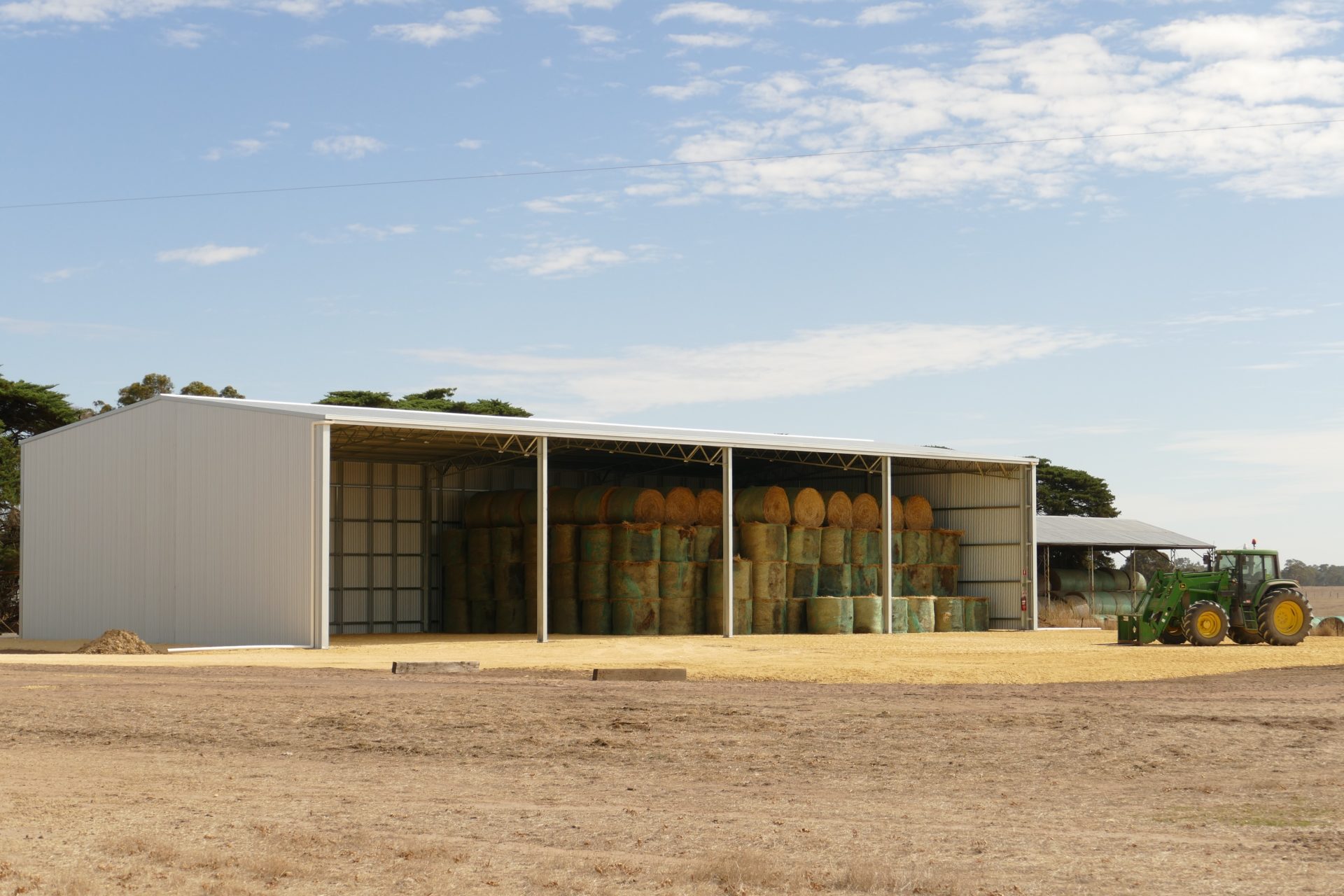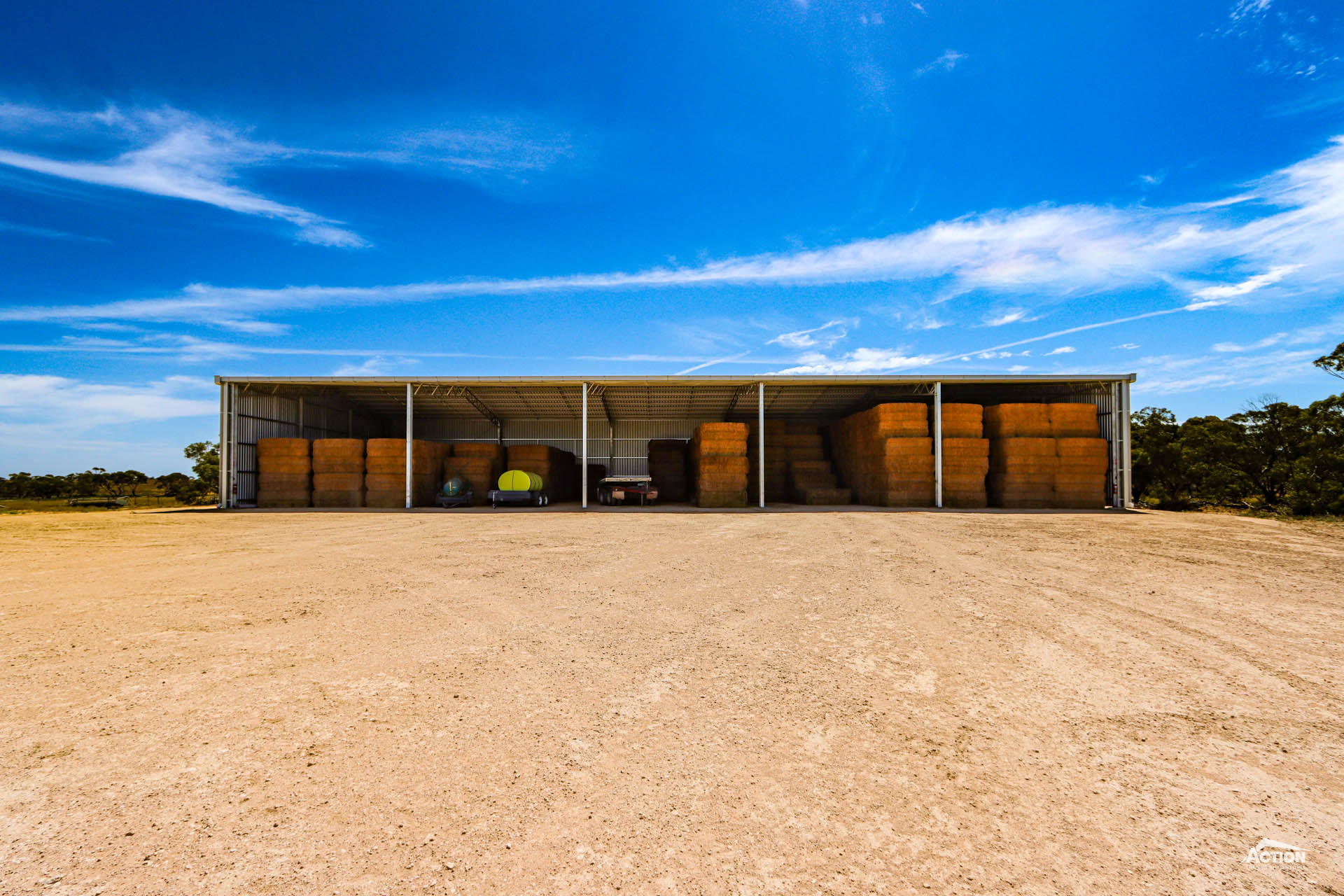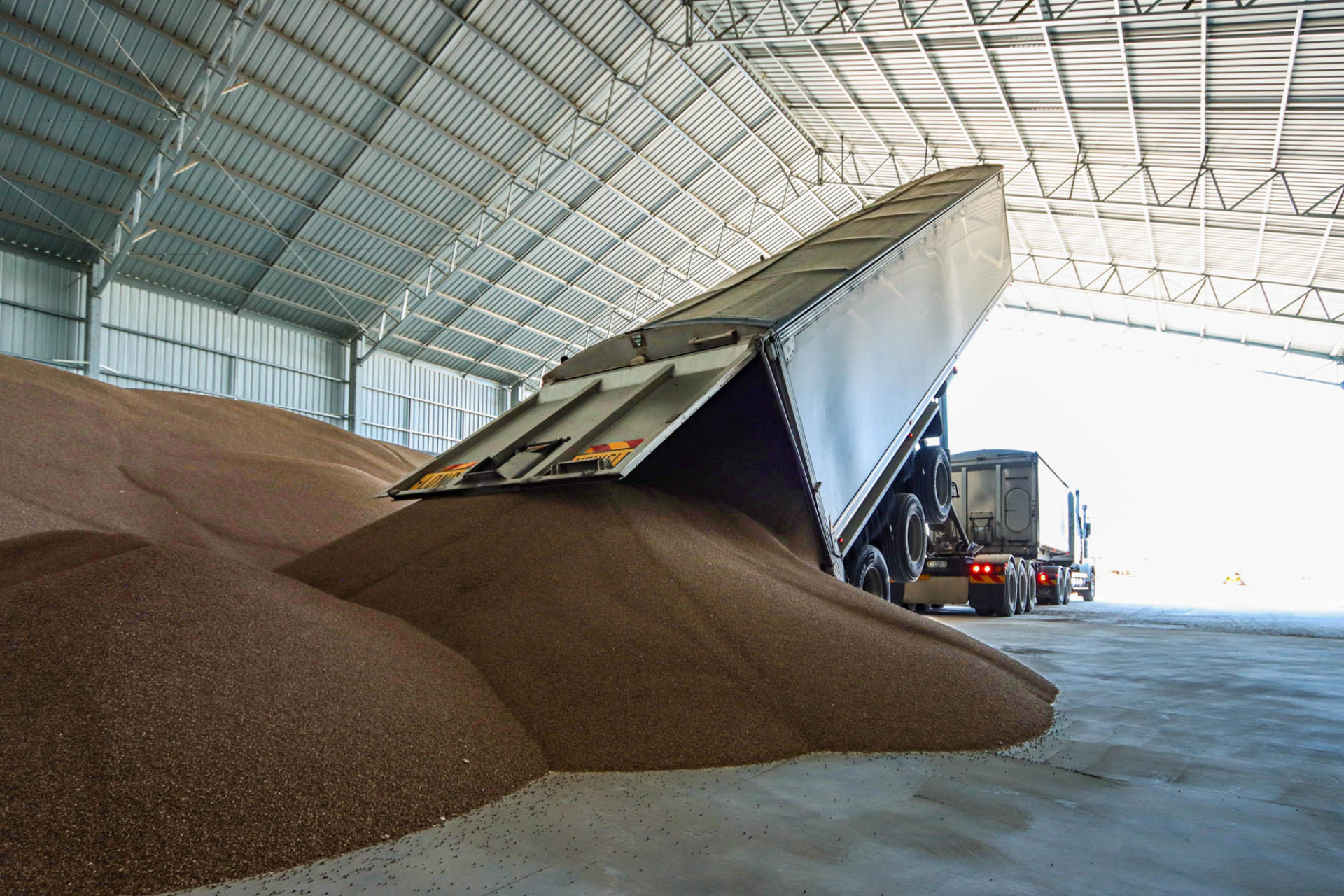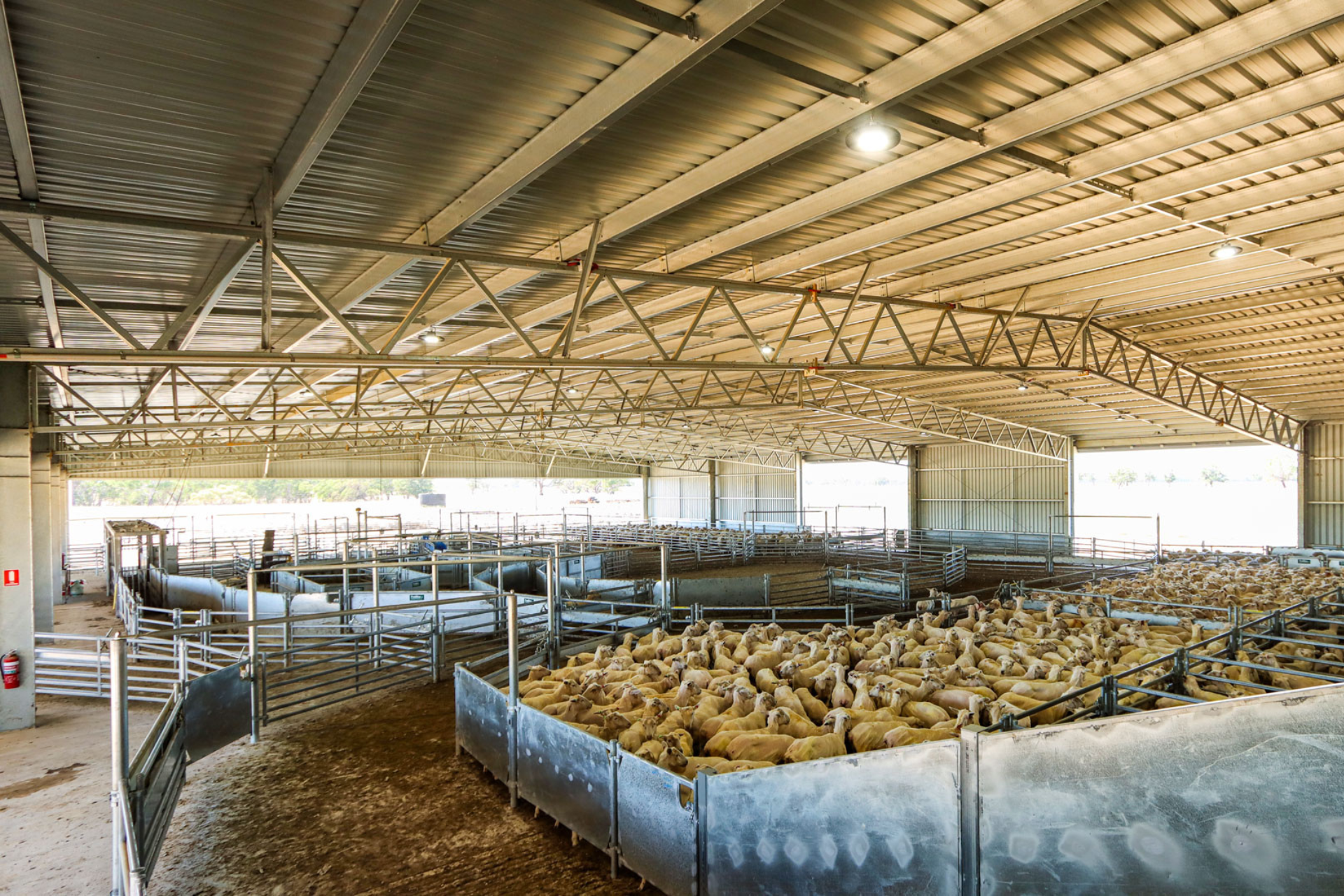Capacity is one of the most important considerations when it comes to hay sheds.
In this article we discuss factors like shed height, bay spacing and council requirements, that may determine how much hay you store in your shed and the bale capacity of the most common hay shed sizes.
Height
The height of a hay shed is mainly governed by the capacity of the equipment that the farmer uses to load/unload their shed.
Those that load their shed with a front-end loader, are generally limited to stacking the big square bales up to six in height (or four round bales) – to accommodate this, a shed height of 6m would be required (or 5.25m for round bales).
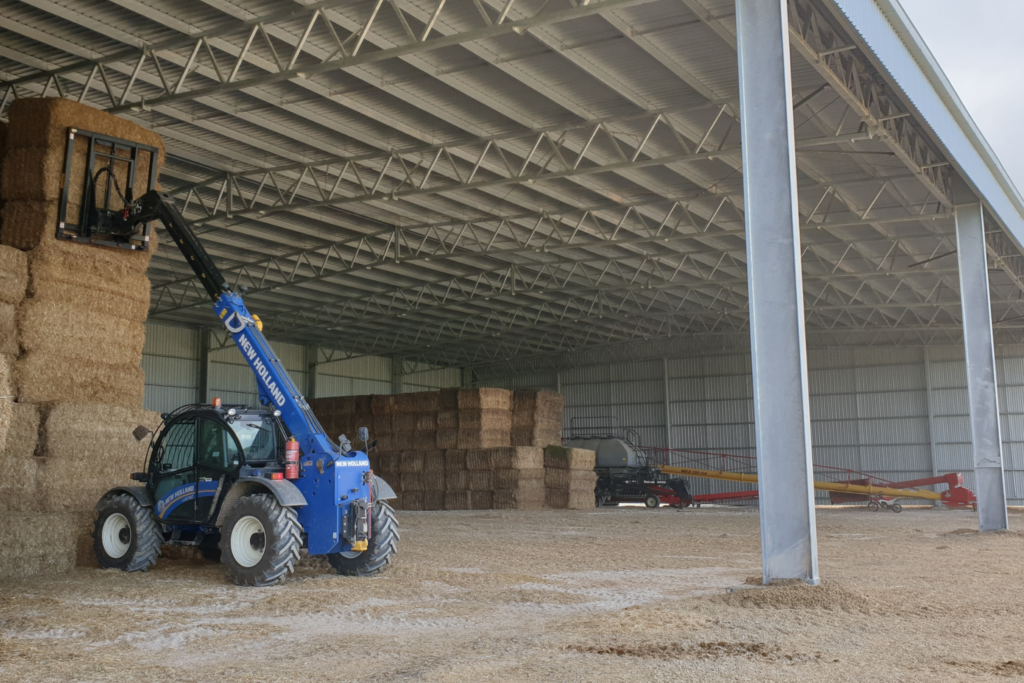
With a telehandler though, big square bales can be stacked in excess of eight bales in height – however, it is obviously of utmost importance to put safety first when stacking bales this high.
Other common eave heights when storing big square bales, are 6.75m (seven bales high) and 7.5m (eight bales high).
While this often comes down to whatever each one of our clients feels most comfortable with, remember that although a shed can be made longer in the future, it cannot be made higher.
Bay Spacing
As we often discuss, the ideal bay spacing we recommend for both hay and machinery sheds is between 8 metres and 8.5 metres.
These bay widths will allow you to stack three big 2.4m long square bales or five 1.5m wide round bales between the columns. This means that there is room for loading, unloading and adequate air movement without being excessive.
Although 8m bays do tend to be the most common, we are very flexible with our designs and are more than happy to discuss any other options with you.
Fire design requirements
Under the revised building code there are two classifications for structures built on ‘Farming Zone’ land; a “Farm Shed” and a “Farm Building”. These have to satisfy different requirements for them to meet regulations.
For example, “for a “Farm Shed” (a hay/machinery shed of up to 2,000m2 in size) to meet fire regulations, the below requirements need to be satisfied:
- One 4A 60B(E) Dry Chemical Fire Extinguisher of 4.5kg or more in weight, per 500m2 e.g. a 1,200m2 shed would require three of the above extinguishers.
- When fitting the extinguishers, the top of the fire extinguisher must be no more than 1.2m but no less than 100mm from the ground.
- Fire extinguisher signage is required, and this must be a minimum of 2m from the ground, positioned directly above the fire extinguisher.
Insurance
Most insurance companies will cover over $500,000 of hay stored in one location. There are obviously certain criteria which would need to be met though, and we recommend you speak to your insurance company to make sure you are adequately covered and won’t be caught out.
Popular hay shed sizes
Here is the capacity of some of the most common sizes to give you an idea of how much hay you will be able to store in your hay shed – bale sizes can vary depending on how the baler has been programmed, so please keep this in mind.
24m x 15m x 6m
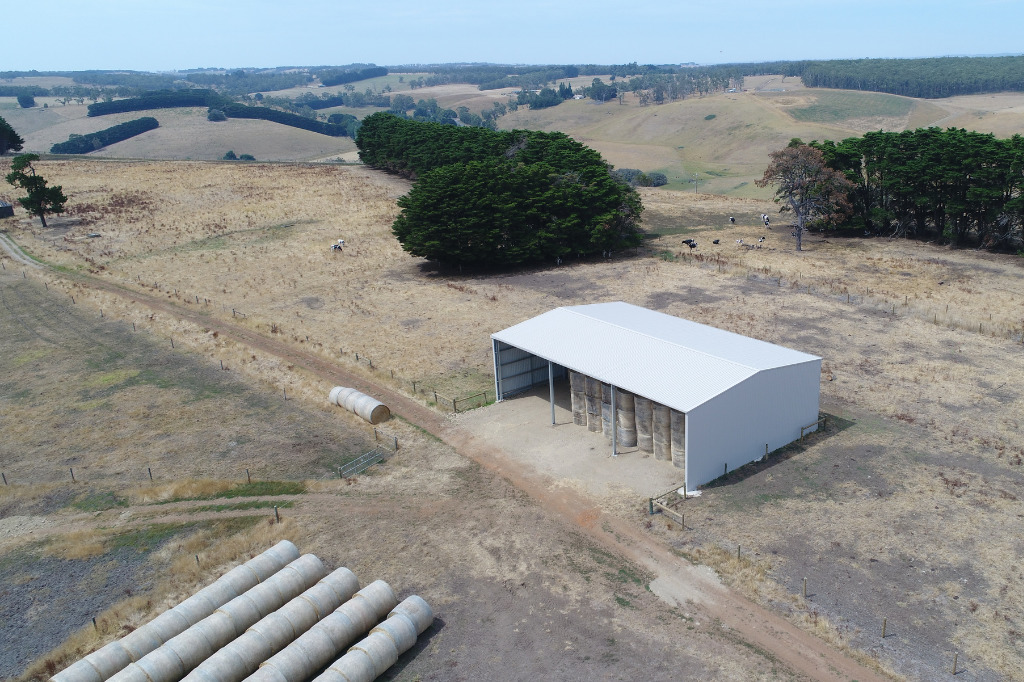
Stores approx. 650 big square bales or 500 round bales
32m x 15m x 6m
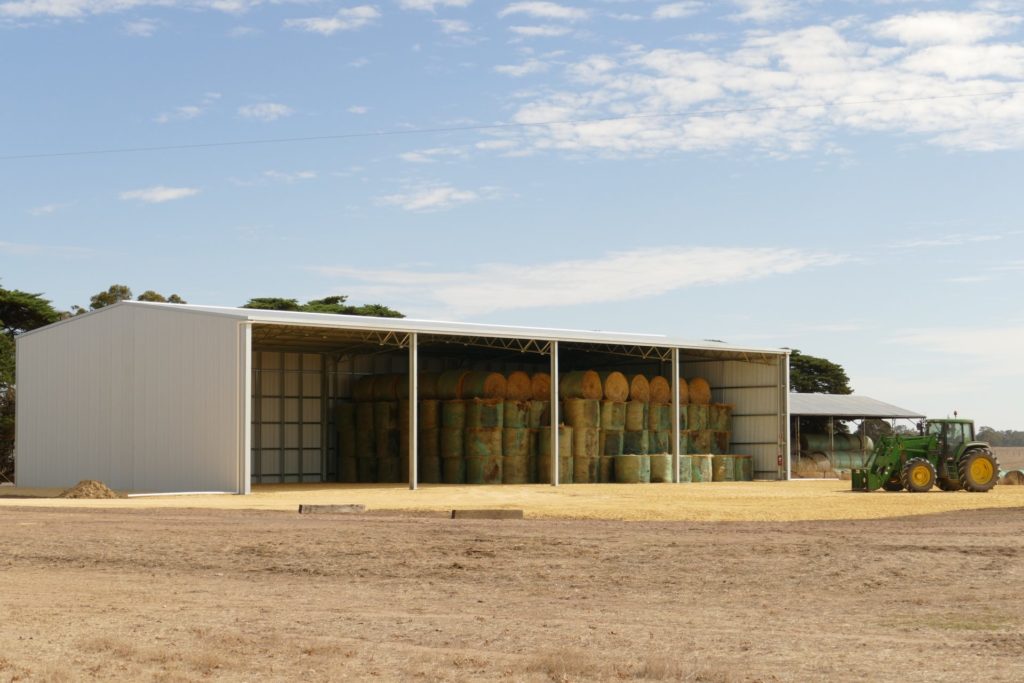
Stores approx. 860 big square bales or 670 round bales
40m x 18m x 6m
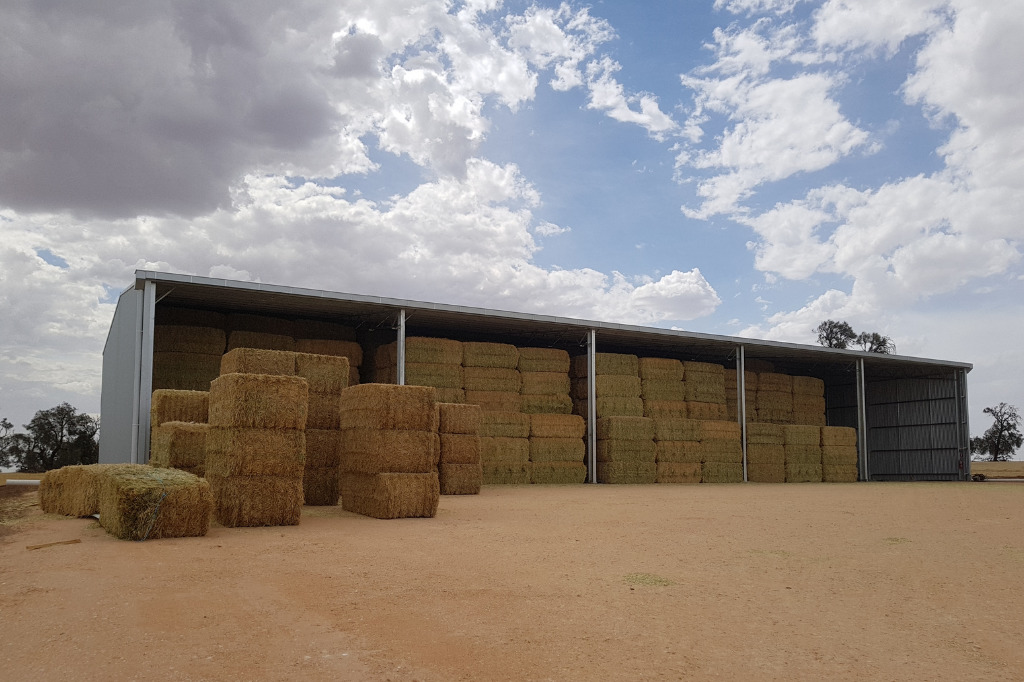
Stores approx. 1300 big square bales or 1100 round bales
40m x 21m x 6m
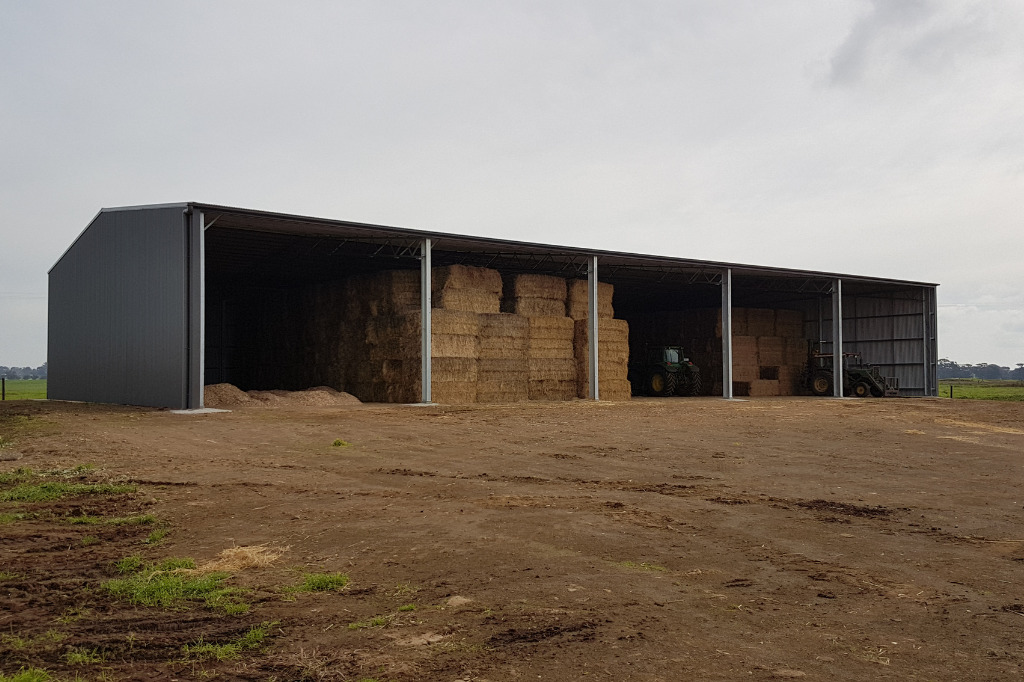
Stores approx. 1530 big square bales or 1250 round bales
40m x 24m x 7.5m
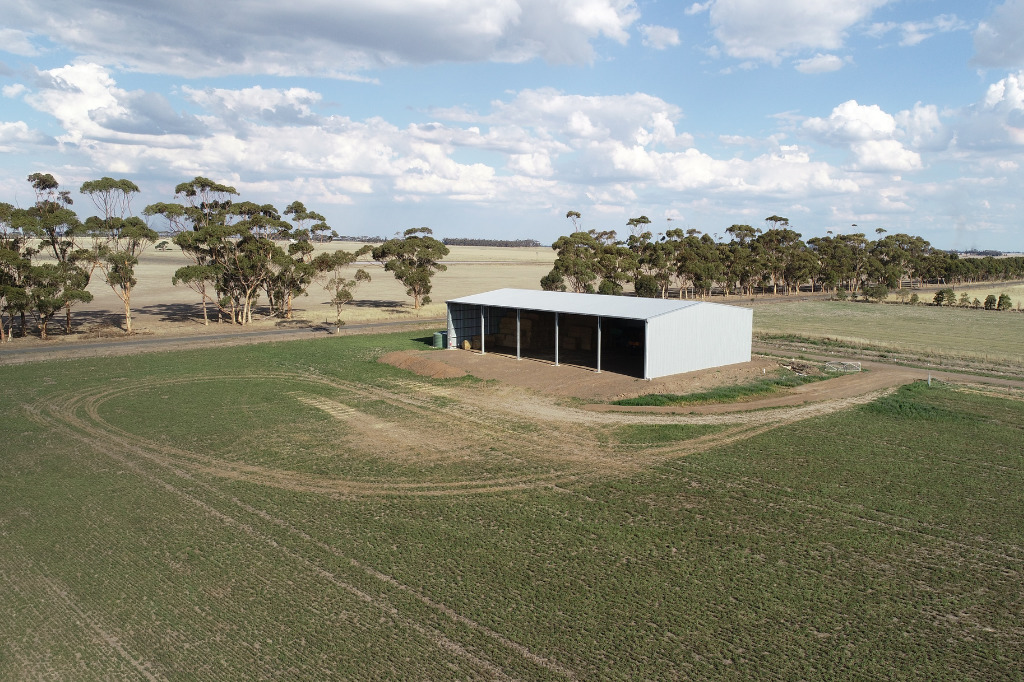
Stores approx. 2280 big square bales or 1875 round bales
64m x 24m x 7.5m
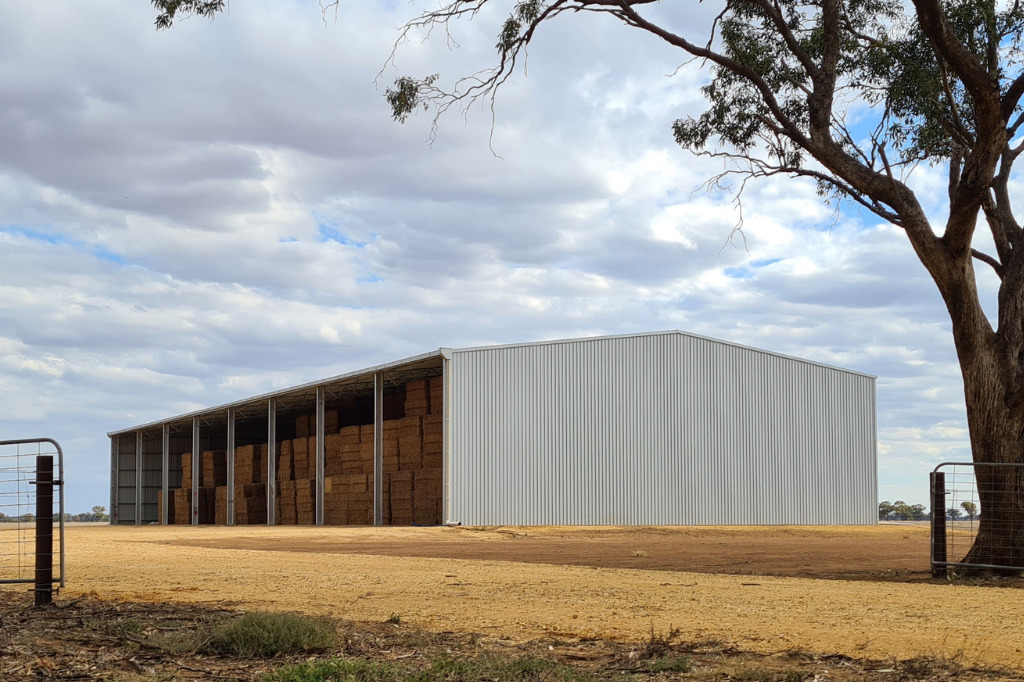
Stores approx. 3650 big square bales or 3360 round bales
If you would like to know the capacity of any other sizes or configurations, our building consultants are always happy to discuss your options and provide information. We can also break-down our costings to a ‘cost per bale’ figure, as this really helps to determine what configuration will work out the most cost-effective for you.

